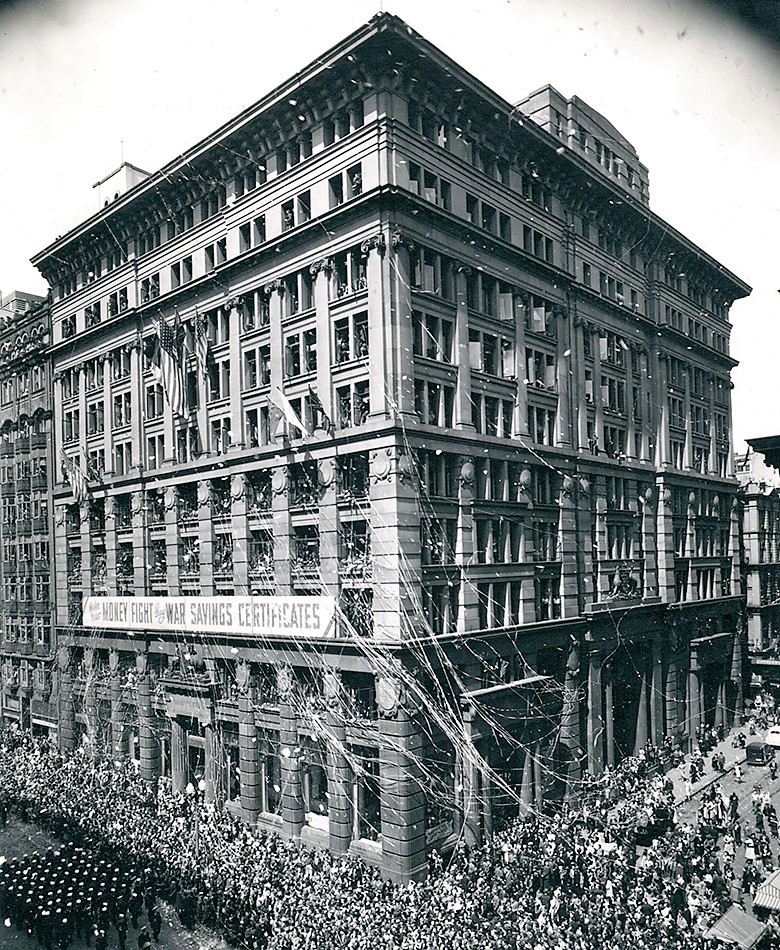Money Box Building

Money boxes were designed to encourage children to save, and to experience the growth of coins into sums of money. The Commonwealth Bank money box originated in 1921. The previous year the Bank had taken over the Queensland Government Savings Bank, and its existing stocks of money boxes were relabeled with images of the Commonwealth Bank’s headquarters on the corner of Pitt Street and Martin Place, Sydney.
The building itself is described as a national symbol, “the first and very substantial physical manifestation of the powers that the Commonwealth Government acquired in the area of banking after the federation of the Australian colonies.” The building is also regarded as significant for its design, combining Grecian Doric, Art Deco and other influences. As well as the ground floor banking chamber, and governor’s office and other areas expected in such a building, the bank also included rooms for the Governor General and the Prime Minister. There was a banquet hall on the ninth floor which was used for many VIP dinners, including one for the Prince of Wales in 1920.
The image of the building itself became familiar to many people across Australia during the 20th century through its use on money boxes issued by the Commonwealth Bank to children starting from 1922. The money boxes were rectangular shape, roughly reflecting the dimensions of the bank building, and printed with the building’s exterior. As a result, it is referred to as the “money box building”. The building has long finished its day as a bank. The building now houses retail space in the old banking hall.
#yougottalovesydney
IMAGE CREDIT: Commonwealth Bank
